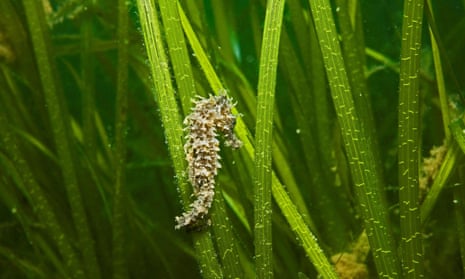The Government has been accused of “dragging its feet” on protecting the seas, as it announced fewer than two dozen potential sites for new conservation areas.
The Department for Environment Food and Rural Affairs (Defra) has proposed 23 new marine conservation zones in the second stage of creating a network of protected areas in the seas around England – down from 37 candidate sites announced last year.
So far, just 27 marine conservation zones have been designated in English waters, although 127 sites were recommended by regional groups tasked with drawing up potential sites to protect ocean species and habitats.
Conservationists warn the latest set of proposed conservation zones, which will now be subject to public consultation, are missing key sites and putting habitats and wildlife ranging from large seagrass meadows to the spiny seahorse at risk.
Wildlife experts say a “truly ecologically coherent network of sites” is needed to protect marine wildlife and restore the seas and fish stocks after decades of neglect and decline.
Defra said the 23 proposed sites would cover more than 10,000 sq km (3,800 sq miles), protecting important seabed habitats and species, and it hoped to designate them within a year, with a third tranche to follow later.
Marine environment minister George Eustice said: “We’re doing more than ever to protect our seas, preserving incredible underwater landscapes and helping our sea life flourish.
“We’ve already created 27 marine conservation zones and a quarter of English inshore waters are in protected areas.”
But he said: “It is important we secure the future of our coastal communities as part of our long-term economic plan. We want to support these communities while protecting our marine life.”
Sites proposed for designation in the second tranche of conservation zones include Allonby Bay on the Cumbrian Coast which has blue mussel beds and living reefs, and coast between Bideford and Foreland, home to pink sea fans and anemones.
The latest proposals also include Fulmar, 140 miles off the Northumberland coast, protecting sandy and muddy habitat in the North Sea which is inhabited by clams, cockles and the brittlestar.
But conservationists said important areas such as Studland Bay, Dorset, with seagrass meadows that are home to breeding seahorses and juveniles of species such as bass, bream and flatfish, and sites around the Isle of Wight have been missed out.

Marine Conservation Society biodiversity and fisheries programme manager Dr Peter Richardson said: “We are alarmed that these proposed MCZs (Marine Conservation Zones) have been shelved, at least for the time being.
“We believe all of the sites are necessary to achieve the Government’s stated commitment to deliver a full network. Delaying 14 sites means that a number of the UK’s iconic marine places and habitats are still not adequately protected.”
He added: “This decision doesn’t match urgent conservation needs, or indeed, the ambition of the public, who continue to demonstrate their support for the establishment of a network of marine protected areas in UK seas.”
WWF-UK’s head of marine policy Dr Lyndsey Dodds said the 14 sites had been dropped from the 37 originally identified for this round of consultation despite clear cross-party and public support.
“This is a cause for huge concern, and shows government is dragging its feet on this issue.
“If we are to see an ecologically coherent network of marine protected sites established to safeguard the ecological and economic sustainability of our seas, we need clear leadership from government.
“Although we welcome this consultation we call on the government to go much further, and stop deferring difficult decisions on marine conservation. It is vital that all 23 in this new consultation are designated, or we risk long-term damage on ecological and economic grounds.”

Comments (…)
Sign in or create your Guardian account to join the discussion